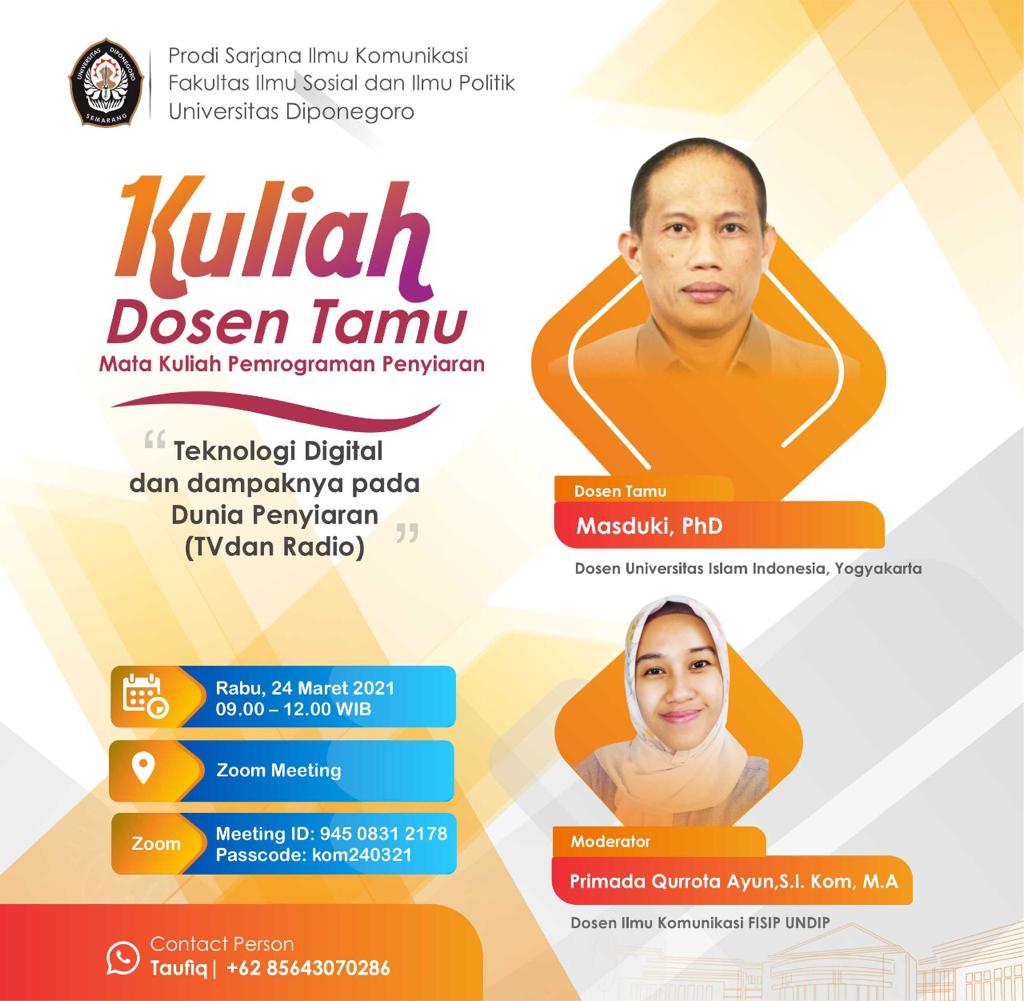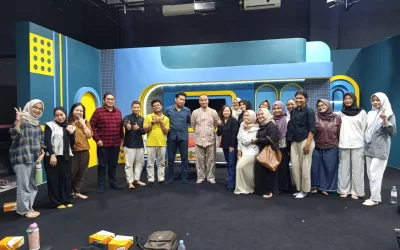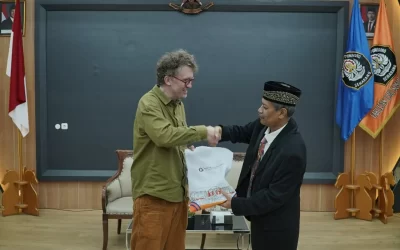Semarang – Apart from preparing students to be able to produce journalistic content and products, it is also important to know the situation that is happening in the media industry. So, not only honing students’ skills but also providing an understanding of the world of broadcasting. This was discussed at an event entitled Public Lecture held by the Communication Studies FISIP Undip on Wednesday (24/03) online through the Zoom Meeting platform. Public lecture is a teaching and learning activity by inviting lecturers, experts, or practitioners who are experienced in their fields from outside Undip.
In this public lecture, Communication Science Study Program invited Masduki, Ph.D., a guest lecturer from the Islamic University of Indonesia, Yogyakarta. Not only does he work as a lecturer, but he is also a practitioner, researcher, and writer who is incorporated in several organizations. One of them, the Indonesian Independent Journalists Alliance.
The public lecture also presented several Undip FISIP Communication Science lecturers such as Lintang Ratri as the host, Primada Qurrota Ayun as Moderator, and other lecturers who also joined. The participants also came not only from students but also from the general public.
The event was opened by giving a speech by S. Rouli Manalu as Head of the Communication Science Study Program of the Faculty of Social and Political Sciences, Undip. She thanked the guest lecturer who had attended and explained the importance of the topics raised at that moment. According to Rouli, knowledge related to the media industry must be possessed by students who want to be involved and market the content in it. So she hopes that students who have been trained in making journalistic products can be educated by the material presented.
“Production of news or audiovisual media content is not only projected by us on television but how we will use other alternative channels. So now we do not require that one type of content be attached to one type of medium, but that content can be disseminated through various types of content. medium. Including online medium,” she explained.
Furthermore, the Moderator, Primada Qurrota Ayun, delivered an outline of the material to be discussed that day. She said that the development of digital technology has caused many changes in various sectors, especially in the broadcasting sector which is the mainstream media. So that the lecture emphasized the discussion about the condition of the media industry which continues to experience transition.
“How now they have to operate, how they have to manage the management, then they have to develop the program, and restructure the business model, that’s what we will discuss,” she said.
Masduki, Ph.D., as the speaker, started the lecture with his amazement about the media used by students every day. Through the answers collected in the chat column read by the moderator, Masduki concluded that the current generation rarely accesses mainstream media such as radio and television. He also connected with data that shows a decrease in television listeners and viewers, but there is an increase in YouTube and podcast platform users that can shift people’s habits in consuming content.
He explained that six important factors are seen in the broadcasting business, namely: content, media ownership, infrastructure, distribution, funding, and audience behavior. But when the times have changed, even though the content has not changed significantly, the other five factors have started to change.
“The content is relatively changing, but there are changes in other aspects such as changing ownership, changing infrastructure, distribution patterns and funding, so that the behavior of viewers changes in treating content in broadcasting,” he concluded.
Writer : Amelia Nuraini Purnomo
Editor : Dian Rahma Fika Alnina





0 Comments